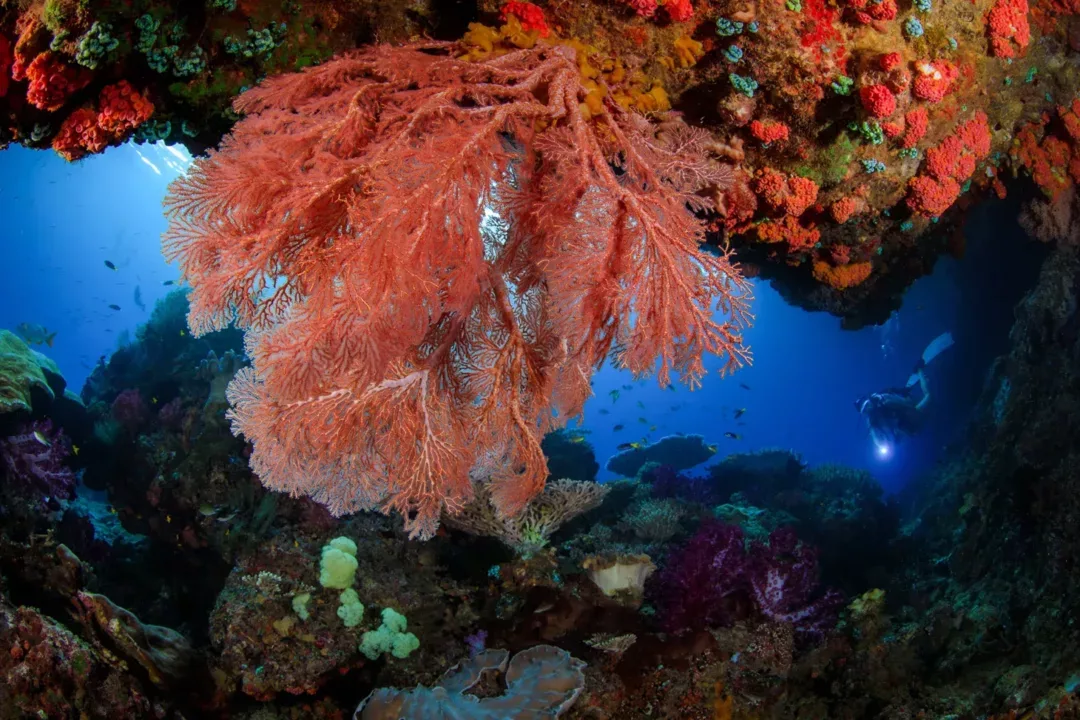Stabilising reef surfaces, remediating reefs after a ship grounding, and other science-based actions that help corals grow are among the suite of innovative actions that can improve the Great Barrier Reef’s health and resilience.
Australia is a world leader in marine management and, in a first for the Reef, the Great Barrier Reef Marine Park Authority (GBRMPA) and Queensland Parks and Wildlife Service’s joint Interventions Policy provides direction on assessing, developing and implementing restoration or adaptation activities in the Great Barrier Reef World Heritage Area.
GBRMPA Chief Executive Officer Josh Thomas said intervention in the marine environment was a growing area of Reef management:
“The Great Barrier Reef is a vibrant and diverse ecosystem. While taking strong action to address pressures on the Reef such as climate change remains critical, we must also work to actively restore reefs and build the ecosystem’s health,” he said.
“This new policy will guide proactive management actions to get the best environmental outcome for the Reef. We already support innovative programs for a healthier Reef, such as protecting coral by controlling coral-eating crowns-of-thorns starfish.
“This policy opens the door to further innovations that could deliver even better outcomes for the natural environment. Restoration and adaptation interventions can add to our current strong management of this World Heritage icon and help improve degraded reef ecosystems. Restoration activities must be implemented responsibly so the values of the Marine Parks are safeguarded for current and future generations to enjoy.”
This new Interventions Policy provides guidance on the type of actions or set of actions, that might be undertaken in the Great Barrier Reef Marine Park in the future.
Actions could include stabilising the surface of the reef, cooling or shading water, coral seeding to grow new baby corals, rehabilitating habitats, or stabilising beaches to protect turtle nesting sites.
“The policy was developed with scientific and community input and will help guide the amazing Reef interventions being explored by researchers, industry groups and the wider community,” Mr Thomas said.
“As with all activities undertaken in the Marine Park, restoration and adaptation interventions must undergo a detailed assessment before they start and this policy sets out how proposals will be assessed. Reef interventions can complement Australia’s existing and high-quality reef management actions by identifying new methods to help protect the Reef for current and future generations.”
Acting Regional Director for the Great Barrier Reef and Marine Parks Region of the Queensland Parks and Wildlife Service (QPWS) said the paradigm for conserving protected areas has moved from simply protecting natural systems to actively intervening where there is a clear need.
“The ‘toolkit’ available to managers increasingly includes interventions to enhance resilience and protect ecosystems,” Ms Alderson said.
“QPWS is actively involved in a number of successful interventions in the Great Barrier Reef World Heritage Area including protecting the globally significant green turtle nesting site at Raine Island and replacing damaged coral structure after cyclones.
“We will continue to partner with the Great Barrier Reef Marine Park Authority and other non-government organisations to explore and implement innovative approaches to protect our precious natural areas.”
This policy helps implement part of the Great Barrier Reef Marine Park’s Blueprint for Resilience, which outlines the top 10 actions to improve the health and resilience of the Reef.
Source GMBRPA Press Release


